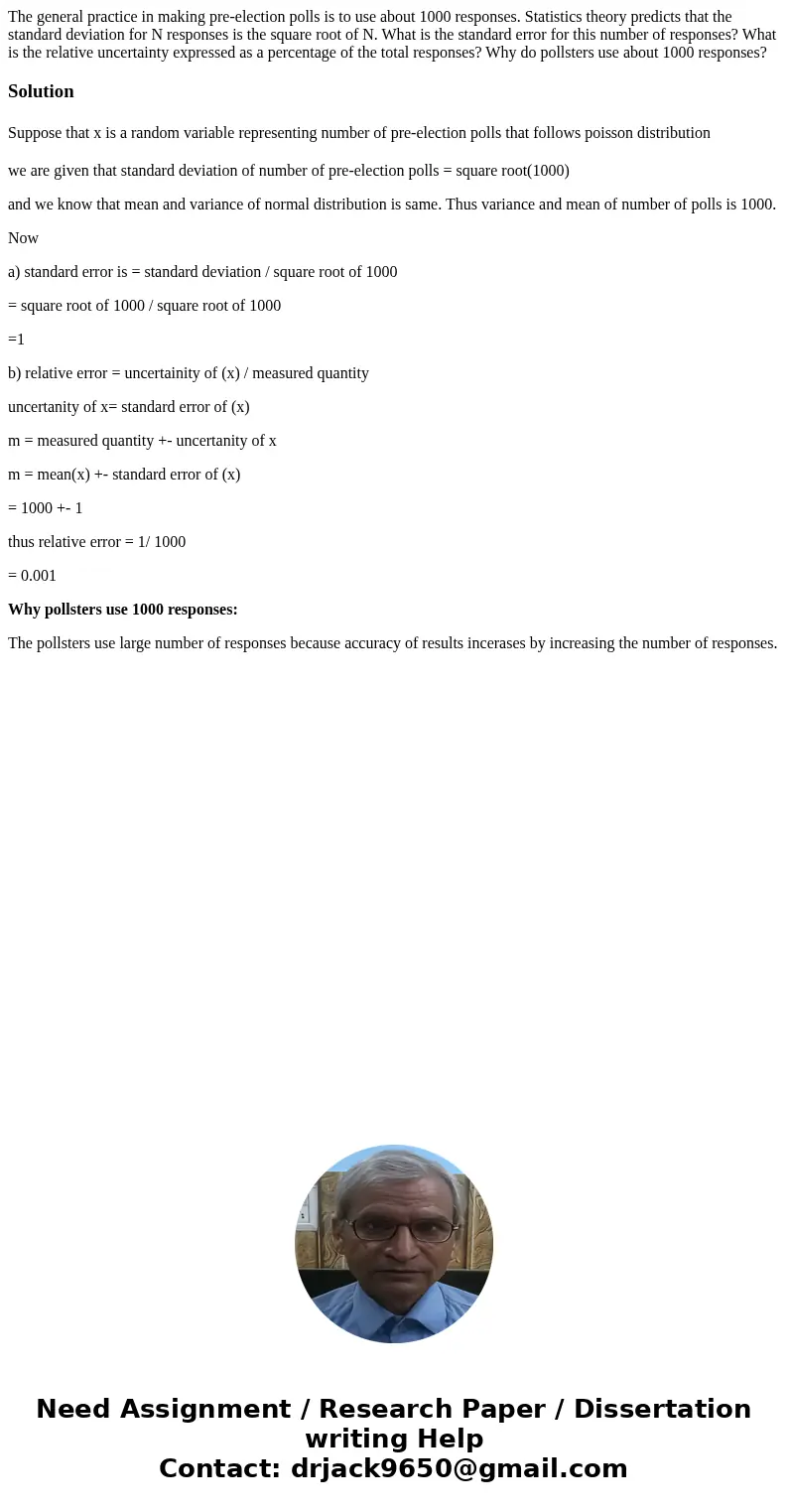The general practice in making preelection polls is to use a
The general practice in making pre-election polls is to use about 1000 responses. Statistics theory predicts that the standard deviation for N responses is the square root of N. What is the standard error for this number of responses? What is the relative uncertainty expressed as a percentage of the total responses? Why do pollsters use about 1000 responses?
Solution
Suppose that x is a random variable representing number of pre-election polls that follows poisson distribution
we are given that standard deviation of number of pre-election polls = square root(1000)
and we know that mean and variance of normal distribution is same. Thus variance and mean of number of polls is 1000.
Now
a) standard error is = standard deviation / square root of 1000
= square root of 1000 / square root of 1000
=1
b) relative error = uncertainity of (x) / measured quantity
uncertanity of x= standard error of (x)
m = measured quantity +- uncertanity of x
m = mean(x) +- standard error of (x)
= 1000 +- 1
thus relative error = 1/ 1000
= 0.001
Why pollsters use 1000 responses:
The pollsters use large number of responses because accuracy of results incerases by increasing the number of responses.

 Homework Sourse
Homework Sourse